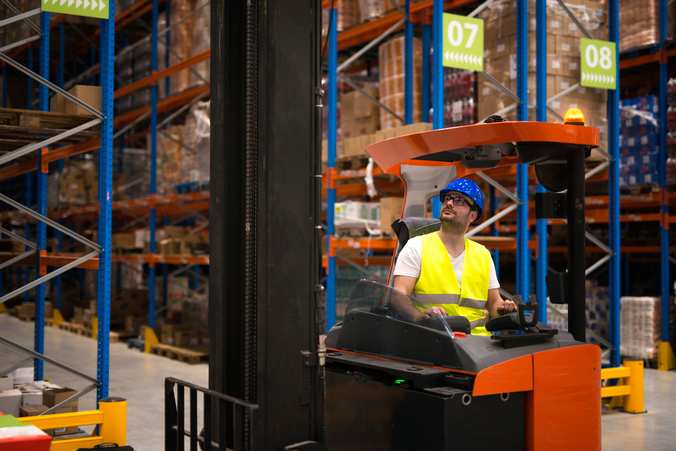In the world of logistics, efficiency and control are crucial to maintaining a smooth operation.…

How to choose a cross-docking provider: key factors to ensure efficiency
Reading Time: 5 minutes
In modern logistics, agility and cost reduction are two of the greatest challenges for businesses. As supply chains become more complex, companies must seek logistical solutions that optimize their operations without compromising efficiency. This is where cross-docking comes in, a key process that helps reduce transit times and operational costs.
Choosing the right cross-docking provider not only improves efficiency but can also make a difference in the competitiveness of your business. For this reason, we have developed a guide that will help you make an informed decision, avoiding costly mistakes and ensuring that your company’s logistics operations are as efficient as possible.
📦 What is Cross-Docking and Why is it Crucial for Your Business?
Cross-docking is a logistics system in which products arriving at a distribution center are transferred directly to the trucks that will distribute them to their destination, without being stored.
This process allows for the quick movement of products, optimizing resources and minimizing the need for storage. Therefore, it is mainly used for products that require rapid distribution or have a high turnover rate.
Key benefits of cross-docking are:
💲 Cost reduction
By minimizing storage time, companies can reduce costs associated with inventory and storage space.
⏱ Faster transit times
The direct flow of products shortens delivery times, resulting in higher customer satisfaction.
⚙ Improved operational efficiency
Streamlining the logistics process reduces workload and human errors, optimizing the entire supply chain.
Cross-docking has a significant impact on the supply chain by improving the speed and efficiency of logistics operations. It enables companies to respond quickly to market demands, minimizing wait times and improving customer satisfaction.
📋 Factors to Evaluate When Choosing a Cross-Docking Provider
Choosing a cross-docking provider should not be taken lightly, as it will directly impact your business’s efficiency and profitability. For this reason, we recommend following these guidelines:
🔍 Understanding Your Business’s Specific Needs
To select the right provider, it is essential to analyze the type of product your company handles, the volume of goods, the frequency of shipments, and the complexity of the supply chain. A cross-docking provider will not serve all businesses equally, so it is crucial that the provider offers solutions tailored to your business’s specific characteristics.
For example, consider if your company works with perishable products or those with expiration dates that require quick workflow to avoid losses, as well as shipment frequency — whether the volume is constant or there are peaks during certain times of the year.
💰 Price/Quality Relationship
One of the common concerns when choosing a cross-docking provider is finding the balance between price and service quality. While costs are an important factor, quality should not be compromised. Consider that a provider with advanced technology or inventory management systems might have a higher initial cost, but their benefits could translate into lower operational costs in the long run.
Ensure that prices are clear and transparent. Sometimes, a provider that seems cheap initially may have hidden costs that, over time, increase the total cost of the operation.
💻 Technology as an Ally: Integration and Visibility
Technology is a fundamental pillar in the cross-docking process. A good provider should have platforms such as WMS (Warehouse Management System) and real-time visibility to ensure that inventory moves efficiently and without delays. This improves transparency while allowing detailed tracking of inventory and optimizing processes.
📈 Flexibility and Scalability of the Provider
When choosing a provider, it’s important to ask: “Can this provider grow with my business?” If your company experiences demand spikes (e.g., during high seasons or events like Black Friday), it is essential that the provider can handle these changes without affecting efficiency.
For example, consider the provider’s ability to handle volume spikes, destinations, and simultaneous transfers, as well as the infrastructure for order preparation.
📜 Regulatory Compliance
Regulatory compliance is a non-negotiable factor. Ensure that the provider complies with all applicable local and international regulations for your industry. This includes customs regulations, transportation standards, quality certifications (ISO), and clear risk management policies.
A provider with certifications will give you peace of mind that your goods are in good hands.
🔒 Security and Protection of Goods
The security of your products is crucial. A good provider must have physical and digital security systems to protect goods during the cross-docking process. For example, video surveillance systems, alarms, and policies to protect shipment information.
🏆 Provider Experience and Reputation
The reputation of the provider is key in your choice. Verifying the provider’s track record in your industry and requesting references can be a good indicator of their ability to meet your company’s service standards.
A provider with experience in your industry will better understand your company’s challenges and requirements. You can check this by reviewing online reviews and testimonials. Companies with a solid reputation often have satisfied customers who can provide details about their experience.
📍 Strategic Location and Distribution Network
The location of the provider’s facilities is key. Ensure they are close to ports, airports, or your main markets to minimize transit times and transportation costs.
Ideally, the provider’s location should be near highways, main roads, and other access routes that facilitate the transport of goods both nationally and internationally.
🚚 Providers with Last-Mile Integration Capability
The last mile process is crucial to completing the distribution chain. It is the final stretch of the product journey to the end consumer and can be the most costly and complex part of logistics. A cross-docking provider offering last-mile services allows for more complete control over the supply chain and ensures that your products arrive on time.
🌱 Sustainability and Environmental Impact
Today, sustainability is an increasingly relevant aspect for both companies and consumers. Concerns about environmental impact are growing, and many companies are making more responsible decisions about their logistics.
When choosing a cross-docking provider, it is important to evaluate if they have a sustainable approach and are committed to reducing their carbon footprint. This can be reflected in eco-friendly logistics facilities using renewable energy or energy-efficient technologies. This is better for the environment and helps reduce operational costs.
On the other hand, in some industries, it is essential to comply with environmental certifications such as ISO 14001 or corporate social responsibility (CSR) initiatives that ensure good sustainability practices and environmental preservation.
🚀 Ready to Optimize Your Logistics? Learn More About AI Río Bravo’s Solutions
Choosing the right cross-docking provider is a crucial decision that will directly impact your company’s efficiency and competitiveness. By carefully evaluating the most important factors, you can make an informed decision that optimizes your logistics operations, reduces costs, and improves customer satisfaction.
If you want to take your logistics to the next level, AI Río Bravo offers the tailored solutions your business needs. We provide cross-docking services, warehousing, kitting, distribution, software management, and more to optimize your company’s supply chain.
Don’t miss the opportunity to improve your organization’s efficiency. Contact us today for specialized consulting and discover how we can transform your logistics operation. Contact us to get a tailored consulting and see how we can help you reach your goals.





